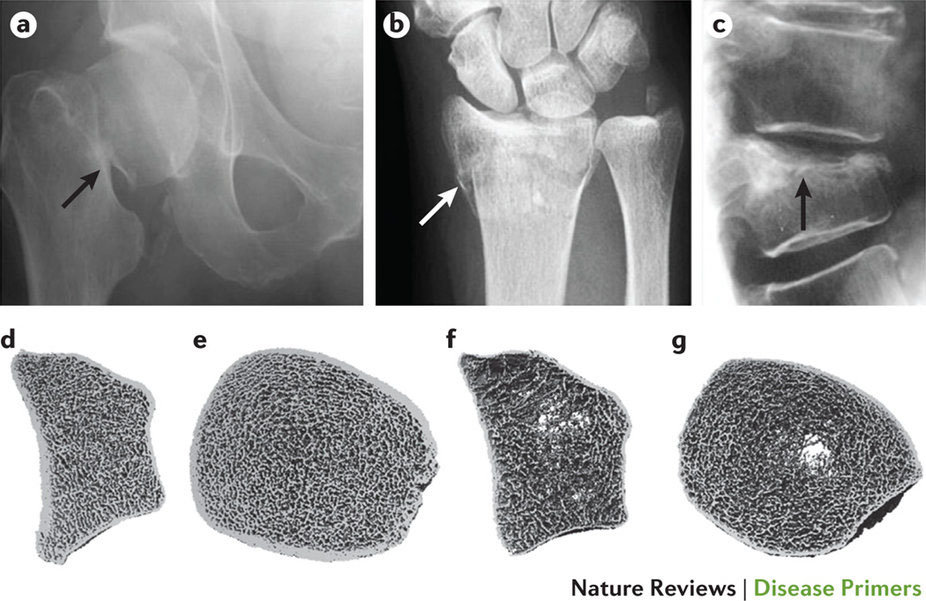閉経後骨粗鬆症
Postmenopausal osteoporosis
2016年9月29日 Nature Reviews Disease Primers Article number: 16069 (2016) doi: 10.1038/nrdp.2016.69

骨粗鬆症は低骨量および骨組織の微細構造の異常を特徴とした代謝性骨疾患である。最もよく見られる骨粗鬆症性骨折は、大腿骨近位部、椎体および橈骨遠位端の骨折であるが、高齢者の骨折の場合、ほとんどの例で、骨の脆弱性が少なくとも部分的に関係していると推測される。骨折の発生率は国によって大きく異なるが、平均で50歳以上の女性の最大50%が骨折リスクを有している。骨折は患者のQOLに深刻な影響を及ぼすため、高齢者人口の増加に伴って公衆衛生上の大きな問題になっている。骨粗鬆症で最もよく見られる病型は、エストロゲン欠乏を原因とする閉経後骨粗鬆症である。あらゆるタイプの骨細胞にエストロゲン欠乏の影響が及ぶことによって、骨代謝回転が促進される。骨形成と骨吸収のバランス異常が起こると、骨梁(連結性の低下)や皮質骨(皮質の菲薄化と多孔化)が影響を受ける。骨粗鬆症の診断では、腰椎および大腿骨近位部の骨密度の測定が行われる。骨の健康を改善する予防戦略として、食生活、運動および禁煙への取組みが行われている。高リスク集団の転倒を減少させることによって、骨折を予防できると考えられる。骨折リスクを低下させる薬剤としては、骨吸収抑制薬(ビスホスホネート系薬、デノスマブなど)および骨形成促進薬(テリパラチドなど)が認可されている。骨粗鬆症に関する細胞レベルでの理解が深まったことで、主要経路を標的とした新しい薬剤が現在開発中である。
PrimeView
骨粗鬆症の特徴は、低骨量および骨組織の微細構造の異常であり、骨の脆弱性と骨折リスクが上昇する。50歳以上の女性の半数が生涯に骨粗鬆性骨折を起こす可能性を有しており、QOLに多大な影響を受けている。
本Primerの図解サマリー

